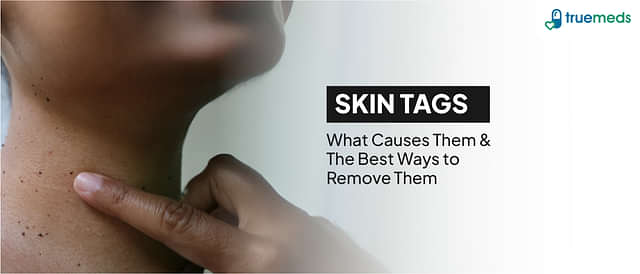Alopecia Areata: Overview, causes, symptoms and treatment.
Last updated on : 15 Jul, 2024
Read time : 8 min
Alopecia meaning- In simpler term, it indicates hair loss. It is a condition in which partial or complete hair loss from the part of the body is witnessed. Alopecia Areata, Alopecia Totalis and Alopecia Universalis are the three different types of Alopecia.
It is an autoimmune illness that often manifests as unexpected, patchy loss in the affected area. Alopecia areata is not a life-threatening medical illness, but it can create a great deal of anxiety and despair in those who suffer from it. The disease has psychological consequences, and there are support groups available to help you deal with them. Your hair may regrow if you lose all of it. This particular aberration results in autoimmunity, which is characterised by an immune system that is misdirected and has a tendency to attack its own body. As a result, the immune system targets and attacks specific tissues throughout the body. When someone has alopecia areata, the body’s immune system assaults the hair follicles in error for reasons that are not fully understood.
According to current research, alopecia areata is caused by an anomaly in the immune system, which causes damage to hair follicles on the scalp. Most people who suffer will not experience a permanent loss of hair because the follicles will retain their ability to renew hair.
Alopecia areata and androgenetic alopecia are two types of non-scarring alopecias that are associated with scalp irritation. Patients with active alopecia areata may complain of slight itching or burning, which commonly occurs before the formation of new patches on their scalp.
Alopecia causes
What is the reason for hair loss?
There are numerous reasons for the loss of hair. Hereditary hair loss is a type that is passed down across families.
This form of hair loss, is the most frequent cause throughout the world, both men and women can suffer from it. The affected males and females are seen to have male patterns and female patterns. It is referred to as androgenic alopecia in medical terms, regardless of whether it occurs in men or women.
Whatever title you pick, it simply means that you have inherited genes that cause your hair follicles (the structures from which each hair grows) to diminish and finally stop producing hair altogether. Shrinking can begin as early as your adolescence, although it normally begins much later in life than that.
Below mentioned are the few factors of Alopecia causes
1. Age
Because hair growth slows down as we get older, most people experience hair loss. Once the hair follicles have stopped producing hair, the amount of hair on our scalp begins to weaken and fall out. The colour of one’s hair begins to fade as well. The receding hairline of a lady is a natural occurrence.
2. Hair Thinning
As a result, hair follicles (which are responsible for holding hair in place) are attacked by the immune system, resulting in alopecia areata (hair thinning). Loss of hair can be seen anywhere on your body, including your scalp, the inside of your nose, and the inside of your ears, among other places. Some people experience thinning of their eyelashes or brows.
3. Stressors such as childbirth, illness, or other life events
You may notice a significant increase in the number of hairs in your brush or on your pillow a few months after giving birth, recuperating from an illness, or having an operation. This can also occur following a stressful period in your life, such as a divorce or the death of a loved one.
4. Hormonal imbalance
Polycystic ovarian syndrome (PCOS) is a typical cause of this hormonal imbalance. It causes cysts to form on a woman’s ovaries, as well as other signs and symptoms, which may include loss of hair in some cases. Some types of birth control pills can induce a temporary hormonal imbalance if they are stopped abruptly. The hair on the scalp of women who suffer from a hormonal imbalance can thin or fall out completely.
5. Infection of the scalp
Having a scalp infection can result in scaly and occasionally inflammatory spots on your head’s surface. You may notice what appear to be little black dots on the top of your head. These are genuine stubs of hair that have fallen out. Some people have a bald area as a result of genetics.
6. Friction
When boots, stockings, or tight garments rub against the skin regularly, people can suffer from hair loss as a result. Frictional alopecia is the medical term for this condition.
The first obvious sign of hereditary loss of hair in women is usually general thinning or a widening of the part, which can progress over time.
Generally, a receding hairline or bald spot on the top of the head is an indicator that an individual is suffering from hair loss.
You can overcome alopecia causes if you can easily detect the symptoms and immediately seek medical attention. This may prevent permanent loss of hair.
Alopecia symptoms
Hair loss can manifest itself in a variety of ways, depending on the underlying cause of the condition. It might manifest itself quickly or gradually, and it can affect only your scalp or your entire body at the same time.
The following are Alopecia symptoms and signs:
Receding Hairline
Hairline receding on the forehead is a common occurrence in men, particularly around the middle of the forehead. Women’s hair is generally parted in a way that is wider than the standard.
Bald patches
Some people have hair loss in the form of round or spotty bald spots on their scalp, beard, or brows, among other places. Before the hair begins to fall out, your skin may become uncomfortable or irritated.
Gradual and Sudden hair thinning
On the top of the skull, there is a gradual thinning. This is the most prevalent type of hair loss, which affects people as they become older and becomes more severe.
A sudden thinning of the hair. Physical or mental trauma can also cause hair loss. When combing or shampooing your hair, or even after light tugging, you may notice clumps of hair falling out. This form of hair loss usually results in the overall thinning of the hair. However, it is only temporary.
Scalp scaling
Scalp scaling appears in patches and spreads throughout the scalp. This is a symptom of ringworm infection. This condition may be accompanied by a loss of hair as well as redness, swelling, and, occasionally, leaking.
The effects of some medical illnesses and alopecia areata treatment, such as chemotherapy for cancer, can result in the loss of hair across the body. In most cases, the hair grows back. The hairs can regrow on their own if given proper therapy and Alopecia areata treatment. Thus, it is necessary to seek prompt medical attention to avoid permanent hair loss.
Alopecia Areata treatment
There is presently no treatment available for alopecia areata. Although hair loss is common, some treatments can help hair grow back more rapidly and prevent future hair loss. There are also innovative ways to conceal hair loss that are available. But the treatment or suggestions for the alopecia areata treatment and cure should be done by a dermatologist. A skin sample may be conducted and evaluated during the diagnosis process to fully diagnose the alopecia. There are also various resources to help individuals cope with the stress associated with hair loss. Some alopecia areata home remedies may offer support, but professional guidance is essential.
It is most typical for people to take corticosteroids to treat their alopecia areata, which are potent pain relievers and anti-inflammatory medicines that can also weaken their immune systems. Local injections, topical ointment application, and oral administration are the most prevalent methods of administration for these.
Few habits to indulge in to prevent hair loss:
- Hairbrushes with soft bristles and wide-tooth combs are excellent tools for protecting your scalp from injury. Avoid overusing chemicals on your hair at all costs.
- Consume nutritious foods. Hair loss can be brought on by a lack of nourishment.
- Stress should be reduced. Make an effort to acquire enough sleep and engage in daily activities.
- Even though a B12 deficiency can result in hair loss, research does not indicate that persons who do not have a deficiency can boost their hair development by taking a supplement containing B12. The fact remains that taking adequate vitamin B12 is critical for general well-being. Meat, dairy products, and other animal foods are excellent sources of vitamin B12.
- Ketoconazole shampoos aid in the alopecia areata treatment by removing sebum, or the natural oils produced by the skin. Ketoconazole shampoos treat the skin area surrounding the hair follicle. These are available in different pack sizes. Getting rid of these oils will allow your hair follicles to obtain more nutrients and oxygen, which will aid in the regeneration of your hair.
Also Read- Hair fall causes and its home remedies
Do not blindly follow and source information as hair losses are of different types and before alopecia areata treatment, you would for sure want to get proper and accurate treatment, medication, and nutrients to further prevent the loss of hair.
For the all latest coupons and offers on medicines, follow us on Instagram and Facebook
Disclaimer
Our healthcare experts have carefully reviewed and compiled the information presented here to ensure accuracy and trustworthiness. It is important to note that this information serves as a general overview of the topic and is for informational purposes only. It is not intended to diagnose, prevent, or cure any health problem. This page does not establish a doctor-patient relationship, nor does it replace the advice or consultation of a registered medical practitioner. We recommend seeking guidance from your registered medical practitioner for any questions or concerns regarding your medical condition.
Popular Articles
Recent Articles
Top-Selling Medicines:
...View more
Top-Selling OTC:
...View more
Company
About UsHealth ArticleHealth StoriesDiseases & Health ConditionsAyurvedaAll MedicinesAll BrandsNeed HelpFAQSubscribe
Registered Office Address
Grievance Officer
Download Truemeds

Contact Us
Our customer representative team is available 7 days a week from 9 am - 9 pm.
v3.7.31
2025 - Truemeds | All rights reserved. Our content is for informational purposes only. See additional information.
Our Payment Partners









































